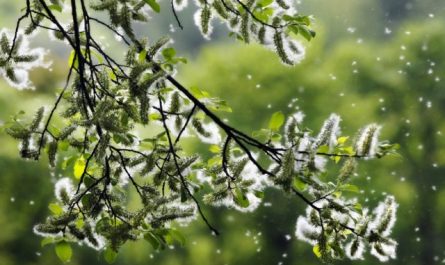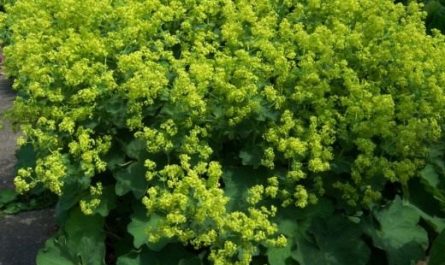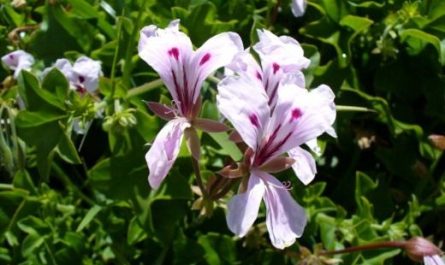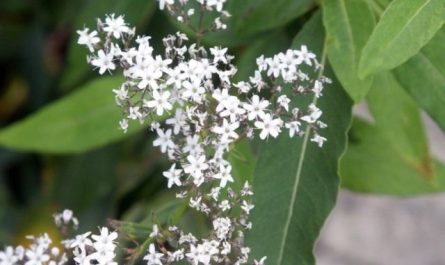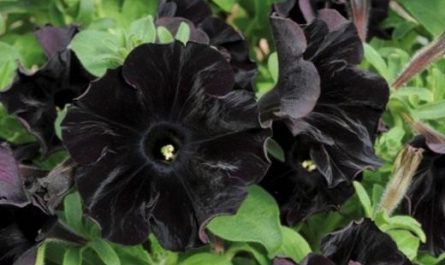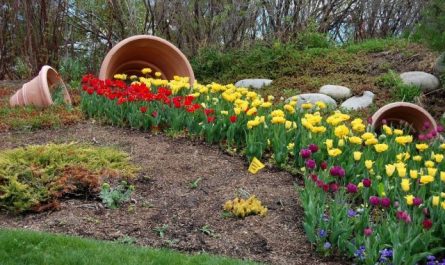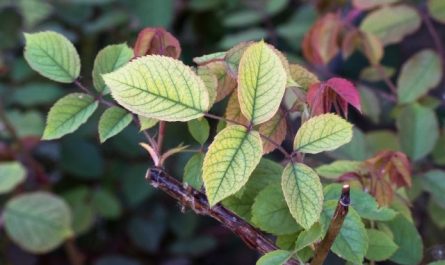Ferns are unique and irreplaceable plants for landscape design. There are no better decorative foliage crops for decorating shaded areas of the garden, plants that allow you to play up the motifs of the landscape style so effectively. But limiting the scope of use of ferns only to compositions with natural charm would be a big mistake. After all, ferns can become an interesting design element even in flower beds, borders or alpine slides.

Contents:
Expanding the use of ferns
Ferns, with their mystery, majesty, antiquity and special character, can bring life to shady corners of the garden and radically change the character of the design. There are no plants that would better cope with the task of creating a calm green background for relaxation, that would offer such rich shades of green or could boast more perfect and filigree forms.
But at the same time, ferns for many remain plants that can be used in landscape design only in natural style compositions or where it is necessary to fill the soil under the shade of large trees. But ferns are plants no less universal than the main herbaceous perennials from among decorative-deciduous crops. They can amaze with their diversity, opening up new possibilities for selecting species for different decorative tasks.
The beauty, grace, and special charm of ferns are revealed far beyond secluded corners. It is high time for ferns to emerge from the shadows, both literally and figuratively. Despite their shade-loving nature, ferns do not necessarily have to be planted only where other garden plants cannot settle: there are places with secluded lighting in flower beds. And they certainly should not be considered plants that will not find a place in formal garden compositions and beautifully flowering ensembles.
The fact that ferns are not commonly used in the design of mixborders and flower beds does not mean that they cannot be planted in any decorative composition in the garden. The ability of ferns to bring in unique oases of peace, mystery, nobility, as well as their filigree lace – all this can shade the beauty of beautifully flowering perennials and shrubs no worse than their classic partners.
Ferns in the company of groundcovers, low-growing or medium-growing soloists, bright or more modest herbaceous crops will reveal their beauty no less than under the canopy of shrubs and trees. In flower beds and other decorative ensembles, ferns can become an unexpectedly expressive accent, a unique tool for introducing architectural contrasts, a means of ennobling and structuring, playing on lines and patterns.
Contrasting with most garden plants, ferns are able to reveal their proud beauty in any company, but at the same time they do not detract from the attractiveness and dignity of any, even the most modest, plant in the neighborhood.

The best place for ferns in the garden
The only limitation on the possibility of using ferns in the design of flower beds, mixborders or other decorative flowering compositions is imposed by the conditions for growing these plants.
Ferns that belong to shade-loving species can only tolerate semi-shaded lighting; they should be placed so that they are shaded from the bright sun by larger species, or in places with natural diffuse shading from buildings and fences.
Light-loving ferns can settle in almost any composition. But much more attention should be paid to the composition and characteristics of the soil. Ferns develop and grow well only in nutritious, organic-rich, light in composition and sufficiently moist soils. For them, as for most herbaceous plants, damp, depleted, uncultivated soil types are not suitable.
Before planting ferns in a flowerbed or mixed border, be sure to improve the soil with compost and do not forget to use it to mulch the soil around the plant. The only exception to these rules are the so-called rock ferns and those species that feel great in nature on rocks and can settle in an alpine garden. But even such plants still prefer shaded places and high humidity (when placing them in rock gardens, make sure that large boulders or stones create sufficient protective shade).
10 Best Ferns for Decorative Garden Arrangements
1. Common ostrich fern (Matteuccia struthiopteris)
A fern from 80 to 130 cm high, one of the most beautiful and large. It is famous for its almost straight, evenly symmetrical leaves and light green color. It is a pleasure to watch the wide fronds of this fern unfold.
Ostrich ferns prefer semi-shaded locations and moist soil, have a creeping rhizome and tend to spread on their own.

It is no coincidence that this fern has won the title of classic and most universal. Noble, filigree, not too large and quite bright in color, the ostrich fern offers to introduce the beautiful greenery of ancient garden favorites into compositions with herbaceous perennials.
The ostrich fern can become an ideal partner not only for the most popular flowering plants, but also for large flowering shrubs or very large perennials with huge leaves (for example, rogersia).
2. Common Polypodium (Polypodium vulgare)
A small but very beautiful fern. Despite the fact that the height of the polypodium varies from 10 to 30 cm, it seems massive and even somewhat rough. The lobes in the leaves are dense, massive, not so densely located, but very symmetrically. The fronds are directed in different directions, practically lying on the ground, the chaotic pattern of the fern rosettes adds expression to the compositions. The polypodium looks impressive, but not at all strict. Deeply divided leaves sit on long and thin petioles, are preserved for the winter.
This fern prefers semi-shaded or shady locations and will only grow in sandy or non-calcareous soil with good drainage.

Polypodium is used for compositions in rock gardens, but it can be content even with a place in a crevice. Its use is not limited to decorative compositions in rock gardens, flower beds with stone backfill, but is also suitable for narrow mixborders near stone walls or in flower beds on slopes.
3. Adiantum pedatum
The height is limited to a maximum of 60 cm. This is an amazingly beautiful carved plant with narrow fan-shaped fronds of leaves on almost black petioles and a light emerald, sometimes seeming almost blue, color. Curly, elegant, it creates a beautiful cover as a ground cover.
This is one of the smallest, but by no means the least beautiful ferns. Adiantum conquers with its filigree beauty and amazing graphic bushes. Small fronds with a lace pattern create very bizarre accents.
Adiantum can only grow in partial shade, tolerates strong shade and requires evenly moist soil with a mandatory acidic reaction.

The beauty of this fern is perfectly revealed against the background of stones in alpine slides, in the company of ornamental grasses and ground covers in any flower bed or in a mixborder.
4. Ceterach officinarum
A very original miniature fern, the height of which varies from 5 to 20 cm. The rounded lobes of the fronds give the plant a resemblance to snake patterns. The leaves are evergreen, collected in small rosettes, multidirectional.
This fern prefers to grow in calcareous soils, feels great in the sun and in partial shade. It is the only drought-resistant fern that can be content with a sunny location. The scraper comb loves limestone soils.

The scraper will look luxurious in the foreground of any decorative compositions. The play of lines and textures in contact with perennials will allow you to create unexpected transitions and bold modern solutions.
5 and 6. Kostenci for every taste
Scolopendra kostenets (Asplenium scolopendrium) is a shade-loving compact fern with a height of 10 to 40 cm, whose evergreen whole leaves seem very unusual for this family. The leaves resemble a hybrid of a fern with horseradish, and make a very original impression. The wavy edge and purple sporangia only emphasize the originality of the plant. The fern needs shading, and can grow on alpine hills in dry soils.
Hairy scaly-leaved scaly-leaved (Asplenium trichomanes) is also a rather miniature type of fern. Feathery, narrow, simple fronds seem airy, unusual, and are preserved for the winter. At a height of 5 to 30 cm, the fern places bright vertical accents and amazes with the texture of almost airy rosettes. This type of fern can only settle in slightly moist soil, in partial shade, and tolerates minimal rocky soils well.


These ferns can decorate any rock garden and even rockeries in portable containers. The hairy scaly-leaved fern can settle in brickwork, in narrow crevices on a minimum amount of soil.
7. Dryopteris erythrosora and other species of shield ferns
Medium-sized ferns, the height of which varies from 30 to 70 cm. Evergreen, almost triangular leaves are distinguished by their density and surprisingly graceful, feather-like structure with lobes pointed at the ends, which gives the plant a more noble appearance. The color with reddish-brown tints seems original, from a distance – golden or copper.
This fern likes partial shade or stronger shading. Shield ferns need moist soils, even if their volume is minimal.

This type of fern is one of the most beautiful additions to all decorative-leaved herbaceous perennials, which are often used in the design of flower beds due to the unusual texture and spectacular color of the leaves. The beauty of hostas, cuffs and stachys in the company of this fern is revealed in a new way.
8. Blechnum spicant
A beautiful fern from 30 to 80 cm high with narrow, fairly dense fronds of a silvery-green color. One of the rare ferns that has spore-bearing and non-spore-bearing leaves collected in one rosette. The rosette is formed by sterile, once-pinnate and wintering leaves, fancifully lying to the ground and forming tangled ornamental patterns.
Derbyanka can only settle on calcareous soils with sufficient moisture. Prefers partial shade.

One of the ferns that can be used not only for decorating flower beds, but also in borders, rock gardens, in decorating dry walls or other compositions with rocky soils.
9. Royal sage (Osmunda regalis)
One of the most airy, lacy ferns, which seems to glow from within due to its lighter yellowish-green color and almost transparent, filigree fronds. Large and powerful, with bushes up to 2 m in height, it flaunts shiny fronds, changing color from reddish spring to summer green and golden autumn.
Chistoust requires moist and even damp peat soil and a semi-shaded location.

Chistoust is able to create a surprisingly graceful background for more massive plants. Most often, this culture is used in decorative compositions on the shore of a pond, but it can become a wonderful partner for any large and massive plants, create a stunningly beautiful background for large-leaved perennials and shrubs, and is suitable for decorating damp flower beds.
10. Polystichum setiferum
A large and quite variable fern, which in favorable conditions can reach a meter in height. The leaves are dark green, filigree, dense, with a clearly visible sorus and a serrated-bristly edge, wide, most often arched and spreading. The rosette seems untidy, but very graceful.
Despite its shade-loving nature, the polygonum is not afraid of the sun at all. This fern prefers light soils with high nutritional value.

The fern can become an airy partner for absolutely any beautifully flowering herbaceous perennial, especially for summer-flowering species. Modest in any other place, this fern gives the impression of being somewhat sloppy, loose, it slightly creeps into the territory of flowering plants, while creating a surprisingly harmonious contrast and giving airy lightness to abundantly colored ensembles.





